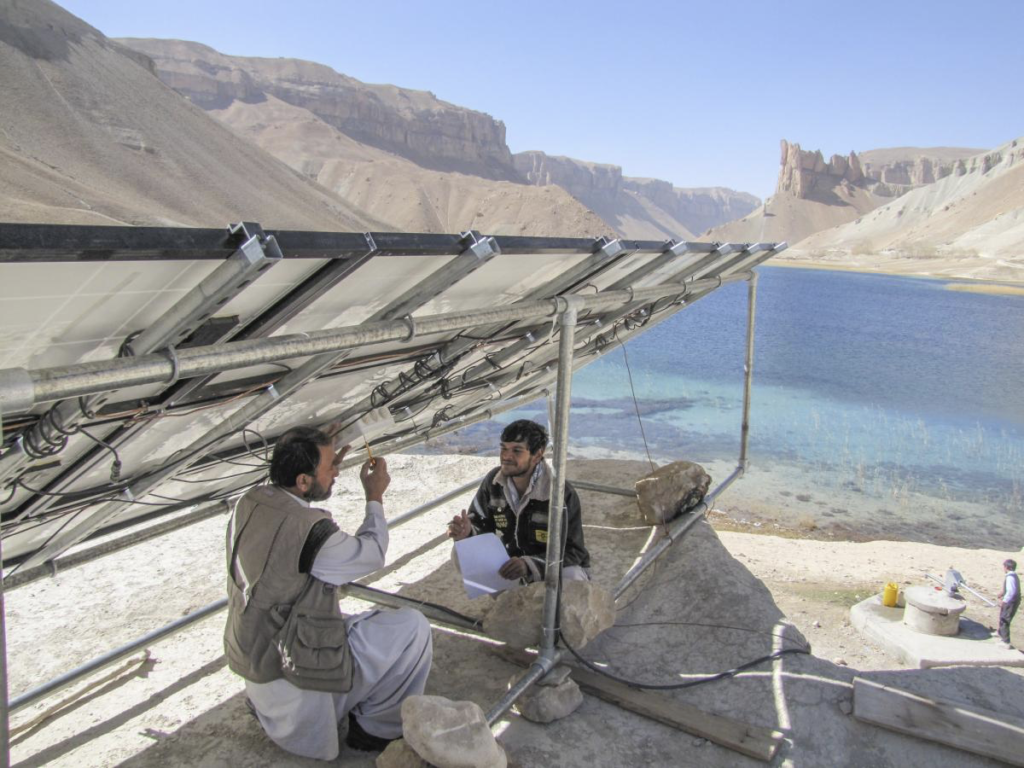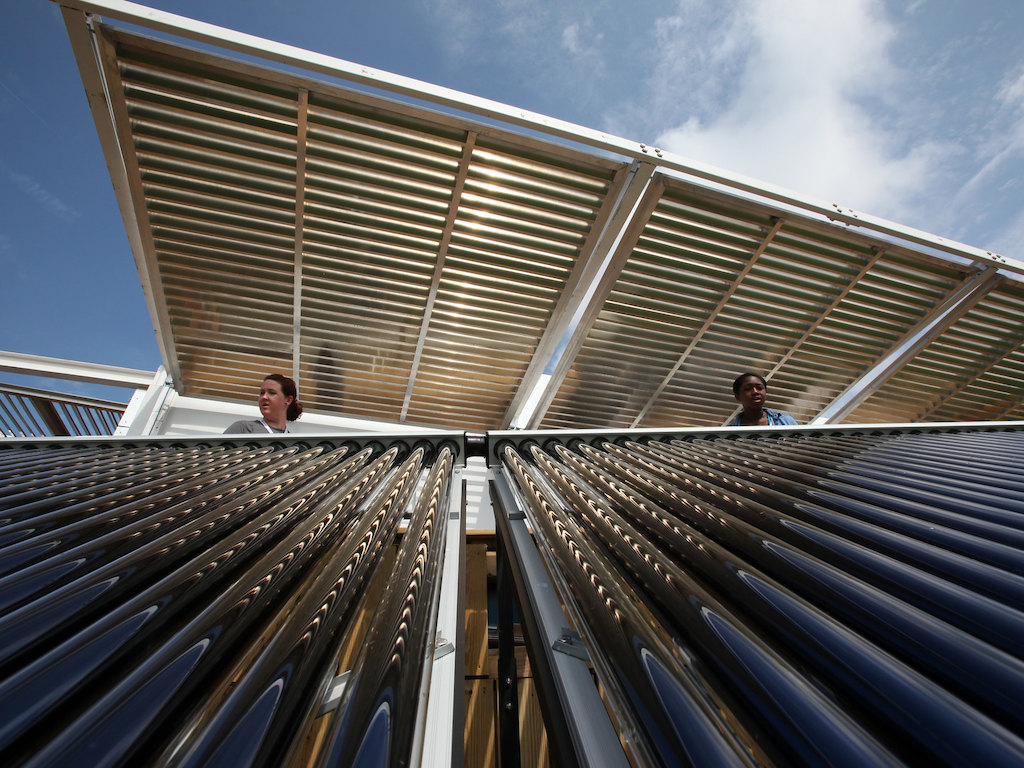7 Mins Read
The hunger for images that show new and existing solutions to the climate crisis continues to grow exponentially as our collective awareness deepens. But relevant and engaging imagery is hard, or even impossible, to source.
As a career photojournalist focused on environmental stories – researching, finding, chasing and shooting climate solutions is a provocation and frustration I have wrestled with personally for over a decade. Since August, I have also been consulting and editing professionally as I head-up the Climate Visuals programme (part of the non-profit Climate Outreach) that researches, advises and curates climate photography. Working with news editors and journalists on a topic that is under-reported at best has helped me better understand why climate solutions imagery is so stubbornly absent from the news stream.
The dominance of negative and even distressing content, which makes for popular and powerful news, can leave audiences with a sense of hopelessness. The stubborn dominance of clickbait and disaster coverage of climate is not a new observation. However, social science has long purported that promoting actionable solutions, particularly coupling them with these emotionally arresting stories of negative impact, helps promote a more effective and lasting positive reaction in readers.
Earlier this year, we hosted a Hackathon in conjunction with Exeter University convening a dozen academics specialising in climate change imagery, as well as industry professionals from both Getty Images and the World Press Photo Foundation. All are leading experts committed to refreshing and collating further evidence into what makes editorial climate photography not just illustrative but also impactful to viewers.
One of the key takeaways: News and social media using high quality, relevant photography increases viewer engagement, saliency and likely its onwards sharing. However, save for the dwindling clutch of premium news titles, the ability to commission quality, new photography is made unaffordable against established and continuing cuts in publishing ad spend and funding. Lens-based reportage unequivocally requires the camera to travel to its story and has suffered disproportionately. The start of this unconcluded race to the bottom of image pricing was the debut of free online news.

Confusingly, over the same period, photography has enjoyed rising cultural importance, becoming a ubiquitous medium and universal communication tool throughout society globally. Every graphical magazine, any branded news layout and every social media author requires and will include the strongest imagery they can afford or source – but not always legitimately. Recent analysis of news illustration suggests that the most popular and effective type of illustration for climate narratives is still traditional, authentic editorial photography.
Photography as a documentary medium cannot easily travel beyond the present as literature, interviews, opinion pieces or statistics on climate change delve into predictions. In order to talk in the future tense, photographers or editors must lean on illustrative or conceptual photography, without the gravity or authenticity to convince viewers. Worse still, news teams are often forced to illustrate climate solutions with the climate causes or impacts that the solutions are designed to counter. This clash of tone between image and their headline is proven to undermine an article.
When turning a camera backwards on science, wielding the latest digital camera technology is ironically problematic. If a company is innovative and genuine, the positive benefit of granting access to a journalist is undeniable, but a camera’s high resolution mechanical eye risks espionage. If Musk, Bezos or those based in Cupertino were designing a solution to climate change, the first visual results would inevitably be released at a highly choreographed and scripted, share price-boosting stage show. These visuals are the bland, carefully choreographed and airbrushed lifestyle scenes designed to sell us a finished technology ‘solution’ once it is available on the market. Commercial imagery can reek of constructed values and veiled attempts at authenticity that feel contrived. Without real integrity, these images rarely ascend into the journalistic domain, nor buy our long term behavioural trust. The more interesting and believable stories on the details, endeavours and failures of climate solutions and those working to develop them remain hidden in research basements or patent applications.

Many accepted and actionable climate solutions rely on personal or societal behaviour change, much of which is reductionist or physically subtle. Photography uniquely documents only a tiny chronological slice of shutter speed selected reality, and so struggles to convey any concept expressed as a change in frequency as opposed to static volume or scale. Part explaining why cyclists have long represented sustainable behaviour, dense gridlocked traffic indicates pollution and all environmentalists eat greens when interviewed over lunch. More natural or forest solution efforts, if implemented correctly, return habitat to its original, arguably undramatic, state. Photographers and clients alike are seduced by images of tree planting as remedy, the well worn, critical moment when a sapling is placed back into the earth with human hands.

In considering how to push past such clichéd traps, photographers need to remain patient, research more deeply and work in a manner closer to that of the written journalists they are drafted to support. As both transport and time are costly units we have all the more reason to empower local storytellers, ingrained with the values and sensitivities of their subject matter. Yet there are systemic failures of the photography industry to use local, ethnic or gender-balanced voices in reporting real global solutions. The issue is often one of connectivity and trust in the broadest sense. Localised professional news photographers in emerging economies, where many climate solutions are also emerging most organically, are often focussed on local or political reporting. We cannot assume they are free or even be able to work safely near state-controlled news agencies. The battle lines of the free press often track closely to the boundaries of the climate justice nexus.

Citizen reporting and user-generated photography has also grown globally with the proliferation of smartphones. The billions of images and climate stories that are captured, and no doubt proliferate locally on closed peer-to-peer apps, rarely make it into international publications unless they are truly exceptional. The barriers to distribution and verification are complex, and even if a story idea could be framed or connected internationally, the presentation style and resolution of smartphones rarely match the expectations required by professional news agencies. Only the most viral, and therefore most valuable content, is ever verified, with none of that value or story drivers trickling back to the original source in the field.

It is tempting, in conclusion, to suggest the need for a radical overhaul, a new way of working or a magic bullet funding model to reinvigorate or democratize photojournalism at large. However, this would be an unrealistic goal given the rapid, unpredictable evolution of news media reporting, and how utterly fragmented, digitized and unmappable the future content creator and agency network is. However, raising resources for targeted geographic and systemic interventions – for the current state of play – is a unique and urgent cause for optimism. Seizing a chance to build photographic capacity where it is most needed; with climate solutions in frame. These new unseen images and stories, could intrinsically possess a value, quality and uniqueness that cuts through and exploits the broken, unrepresentative visual index, and sees them easily proliferate as intelligent, fresh and inspirational metaphors. Only then can we trace the eloquent and clear theory of change shared by the solutions journalism network, offering empowerment and creating more discerning actors capable of shaping a better society.

This story was originally published in Climate Visuals and is republished here as part of Covering Climate Now, a global journalism collaboration strengthening coverage of the climate story.
Lead image courtesy of Stefano Paltera / U.S. Department of Energy Solar Decathlon / CC BY-ND 2.0.



